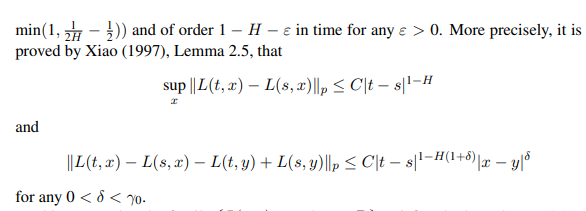Let $W$ be a one-dimensional Brownian motion and let $X_t = \int_0^t (t-s)^{H - 1/2} \mathrm{d} W_t$, $H \in (0, \frac{1}{2})$ be a Riemann-Liouville process. We set $$ \sigma(a) := \inf \{t > 0 : X_t = a\}.$$ Can we prove that for any $a \in \mathbb{R}$ almost surely for any $\epsilon > 0$ there exist $s, t \in (\sigma(a), \sigma(a) + \epsilon)$ such that $X_s < a$ and $X_t > a$? This is well-known for the Brownian motion.
I think I can prove this for $a = 0$. Indeed, to prove it by contradiction, suppose that $$ \mathbb{P}(X \geq 0 \text{ in a neighborhood of } t = 0) > 0. $$ By Bluementhal's $0$-$1$ law, the probability must be $1$. Then, using the symmetry, we see $$\mathbb{P}(X = 0 \text{ in a neighborhood of } t = 0) = 1. $$ Injectivity of Riemann-Liouville kernel shows that $W = 0$ around $t = 0$, contradiction.
But I am interested in the case $a \neq 0$. Then, you have to deal with the past part. Because of that, I don't know how to prove the question. (If the laws of $X_{\sigma(a)+t}-a, t \leq T$ is absolutely continuous with respect to $(X_t)_{t \leq T}$ the claim follows, but I don't know if this is ture.)

